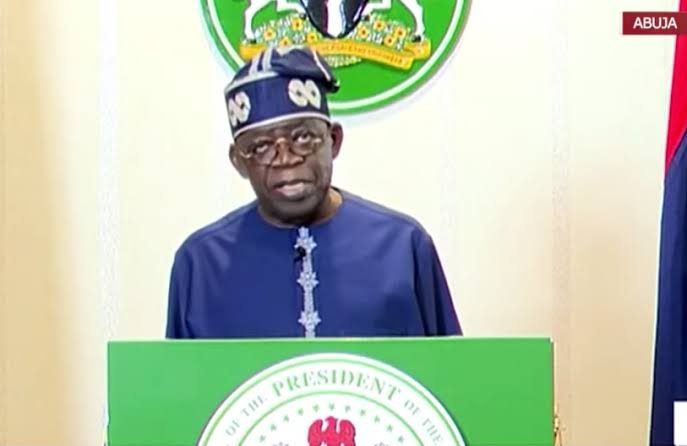By Dr. Charles Obiajulu Ugwu
The Fatigue of Endless New Beginnings.
There is a cruel irony at the heart of Nigeria’s developmental story. For more than forty years, successive governments, often under the applause or prescription of international partners, have launched reforms packaged as the turning point. Each initiative was presented with the language of renewal, the promise of momentum, and the assurance that the country would at last step out of the shadows of missed potential. Structural Adjustment in the 1980s was supposed to reset the economy. Privatization in the 1990s and early 2000s was to unleash efficiency. Banking consolidation, pension reforms, subsidy withdrawals, and agricultural transformation programs all were dressed as best practices, backed by technocratic polish and donor optimism.
And yet, here we are. GDP growth that fails to trickle down. Persistent unemployment. The paradox of an oil giant importing refined fuel. Citizens whose primary adaptation skill is learning to survive whatever “new dawn” the state announces. The question is no longer whether Nigeria has tried reform; it is why Nigeria has become resistant to it.
Unlike the usual narratives that treat failure as inertia or incompetence, what is now visible is something more insidious: a kind of institutional immune system. Policies do not merely fizzle out; they are digested, neutralized, and recycled into the very dysfunction they were meant to uproot.
Reform as Recurring Theatre.
Consider the Structural Adjustment Programme (SAP) of 1986, designed in collaboration with the International Monetary Fund and the World Bank. It promised efficiency, liberalization, and fiscal discipline. Instead, the devaluation of the naira impoverished many, inflation eroded real incomes, and industries struggled with input costs. The intended discipline turned into a lesson in how to game foreign exchange windows and capture rents from deregulation.
Fast-forward to 2004, when banking consolidation under Charles Soludo at the Central Bank was hailed as a masterstroke. Mergers and recapitalization were meant to produce stronger institutions. In the short term, it did, Nigeria’s banking sector attracted attention and capital. But without matching governance discipline, the system quickly mutated. Mega-banks became mega-vessels for insider lending and reckless speculation. By 2009, the Central Bank was back to bailing out failing banks, with taxpayers footing the bill.
Or take the repeated cycles of petroleum subsidy removal. Each round is accompanied by heated protests, government promises of safety nets, and a rhetoric of freeing resources for infrastructure. Each round ends in partial removal, muddled implementation, and the reemergence of rent-seeking. Citizens, far from being mobilized, retreat further into cynicism, certain that their sacrifices will never translate into public goods.
It is not that these reforms were ill-conceived in principle. Many of them have worked in other countries facing even steeper odds. Vietnam, emerging from war and isolation in the late 1980s, used gradual liberalization to engineer an agricultural miracle. Indonesia, after the Asian financial crisis of 1997, restructured its banking system and decentralized authority in ways that enabled resilience. Rwanda, from the ashes of genocide, built institutions that though imperfect, managed to translate reforms into tangible improvements in health, education, and business climate.
Nigeria, however, has perfected the art of neutralizing change.
The Pathology of Resistance.
Systems, like organisms, learn. Nigeria’s political economy has learned to defend itself against reforms the way bacteria develop resistance to antibiotics. Each intervention leaves behind antibodies: new loopholes, smarter rent-extraction mechanisms, or deeper public skepticism.
Currency reforms taught insiders how to arbitrage between official and parallel markets.
Anti-corruption crusades taught politicians to launder legitimacy through selective prosecutions while entrenching networks.
Agricultural transformation programs taught elite farmers how to capture subsidies and credit lines, while smallholders remained marginal.
Public-private partnerships taught contractors how to absorb upfront funds while indefinitely postponing delivery.
Citizens, meanwhile, have developed their own coping immunities. They normalize hardship, hedge against the state by relying on kinship networks, and treat official promises as background noise. Resignation has become rational. When a government announces a new initiative, the citizen’s instinct is not hope but calculation: How much more expensive will my life become?
The deeper danger is that experts themselves the technocrats, policy advisors, consultants are now at their wits’ end. The very toolkits that turned around other nations appear sterile in Nigeria’s soil. What works in Indonesia, Ghana, or Malaysia becomes absorbed here into the swamp of unintended consequences. The reform playbook has not just failed; it has been appropriated by the system as a survival manual.
Comparative Detours: Why Others Broke Through.
To see the uniqueness of Nigeria’s resistance, one must compare.
When Vietnam liberalized agriculture under Doi Moi, farmers saw immediate gains. Incentives aligned with outputs, and results were visible within seasons, not decades. This created legitimacy and momentum. Nigeria, by contrast, launched Operation Feed the Nation in the late 1970s and later the Agricultural Transformation Agenda. Both became symbols of how elites cornered inputs such as tractors, fertilizers, loans while small farmers remained disenfranchised. The policy logic was sound; the capture dynamics were faster.
Indonesia’s post-crisis reforms included decentralizing governance to local governments. This dispersed the capture of rents and created pockets of competition where local leaders had to perform to stay in office. Nigeria’s federal character and allocation formula, by contrast, created a system where oil rents were shared regardless of local productivity, insulating leaders from accountability.
Rwanda, often cited (sometimes too romantically), offers another contrast. The government invested in visible public goods health insurance, education, infrastructure that built credibility. Citizens saw reform outcomes, not just reform rhetoric. Nigeria’s reform cycles, however, rarely produce visible, broad-based wins. Instead, they become more visible as scandals than successes.
The lesson is not that Nigeria is uniquely cursed. It is that the ecology of its reforms has been uniquely absorptive. To borrow from biology: while other nations’ institutions were malnourished but responsive, Nigeria’s are obese in dysfunction they feed on the very remedies meant to cure them.
Designing Unabsorbable Interventions.
If the diagnosis is correct that Nigeria’s developmental ecosystem has grown resistant to reform then the remedy must be equally adaptive. One cannot simply repeat what has worked elsewhere and expect different results. The challenge is to design interventions that are not easily co-opted, neutralized, or digested by the existing architecture of dysfunction.
The organizing principle is this: reforms must be unabsorbable. They must be designed to realign incentives, redistribute risks, and generate outcomes in ways that the system cannot easily convert into rent.
Below, I outline nine such principles, with global illustrations.
1. Skin in the Game: Realigning Risk and Consequence.
Reforms collapse when the powerful enjoy upside gains but externalize the costs of failure. In Nigeria, contractors abandon projects without penalty, politicians enact policies without accountability, and regulators face no personal stake in the institutions they oversee.
Contrast this with Estonia’s digital transformation in the 1990s. Every reformer’s name was tied to outcomes, and failure was reputationally and professionally costly. Ministers were not shielded by anonymity; they were accountable by design.
In Nigeria, procurement reform could begin by mandating performance bonds that are actually enforced, not waived. A road project abandoned midstream should not only trigger financial loss for the contractor but legal exclusion from future bids. Skin in the game works because it recalibrates incentives: it makes sabotage expensive.
2. Antifragile Modularity: Small Experiments, Large Lessons.
Grand blueprints are fragile because when they fail, they fail catastrophically. Nigeria’s reform culture favors mega-announcements “Vision 2020,” “Seven-Point Agenda,” “Economic Recovery and Growth Plan.” Their scale makes them unaccountable.
Indonesia, after the Asian financial crisis, took a modular approach. It piloted decentralization in limited districts, tested governance mechanisms, and expanded what worked. The failures were localized; the successes scalable.
Nigeria’s equivalent could be agricultural clusters piloted in a handful of states with verifiable outputs. Instead of launching nationwide programs vulnerable to elite capture, micro-pilots with open reporting could create a laboratory of reform immune to central paralysis.
3. Incentive Surgery: Changing Payoff Matrices.
Rules matter less than the rewards they create. Nigeria’s energy sector illustrates the problem. For decades, subsidies made smuggling and arbitrage more profitable than refining or distribution. Rational actors behaved rationally, but the payoff matrix was misaligned.
Singapore’s public housing story shows the opposite. By allowing citizens to use pension savings to purchase subsidized housing, the state aligned self-interest with national goals. Home ownership expanded, and political legitimacy deepened.
In Nigeria, incentive surgery might mean restructuring tax regimes so that local governments rely less on federal allocations and more on local productivity. When leaders’ revenue depends on thriving economies rather than shared oil rents, their payoff matrix shifts.
4. Fast Learning Loops: Brutal Feedback, Not Endless Evaluation.
Reforms here are typically evaluated in five-year plans or donor reports far removed from real-time learning. Projects fail slowly, predictably, and invisibly.
Kenya’s digital revolution with M-Pesa succeeded because of tight feedback loops. User adoption, agent performance, and transaction integrity were measured daily. The system iterated rapidly.
For Nigeria, education reforms could adopt similar loops. Instead of waiting years to assess literacy outcomes, digital dashboards could track learning outcomes monthly, with direct consequences for administrators. Fast feedback is reform’s immune booster; it reduces the system’s ability to fake progress.
5. Legitimacy Engineering: Rebuilding Trust Through Visible Wins.
Citizens are exhausted not by hardship alone but by unkept promises. Reform without legitimacy is noise. Rwanda’s community-based health insurance worked not because of technical superiority alone, but because citizens saw clinics built, medicines stocked, and mortality rates fall.
Nigeria’s equivalent could be a radical transparency program: publish every completed federal project online with GPS coordinates, photos, and citizen feedback mechanisms. A pothole fixed in Owerri is more persuasive than a ministerial speech in Abuja.
Legitimacy is a currency; reformers must mint it in small, visible denominations.
6. Authority Re-Scoping: Breaking Capture Through Decentralization.
Centralization breeds capture. Nigeria’s federal system, though nominally decentralized, concentrates decision-making in Abuja. Oil revenues flow downwards, insulating local leaders from accountability.
Indonesia’s decentralization redistributed authority and created competitive pressure among districts. Some failed, but others excelled, proving the model could yield diversity of outcomes.
Nigeria could experiment with genuine fiscal federalism in limited sectors: allowing states to retain a higher percentage of mining royalties or agricultural levies, with strict accountability. Authority re-scoping is not ideological rather its strategic dispersing capture points makes it harder for the system to immunize itself.
7. Hard Shields for Common Goods.
Certain domains including courts, land registries, essential services, must be shielded from political churn. Without insulation, reforms become prey to every electoral cycle.
Ghana’s cocoa sector offers a modest example. Despite political turbulence, the Cocoa Board maintained relative autonomy, protecting farmers from volatility. Botswana’s management of diamond revenues under the Debswana model insulated core assets from the worst of political capture.
Nigeria’s judiciary could be given fiscal autonomy through a sovereign-funded judicial trust, shielding it from annual budgetary manipulation. Essential goods require hard shields, not soft promises.
8. Incentivizing Dissidents and Whistleblowers
Reform survives only when dissent is not suicidal. In Nigeria, whistleblowers are often punished, marginalized, or ignored. Yet transparency is impossible without insiders willing to defect from the system.
South Korea’s chaebol reforms, painful as they were, succeeded partly because regulators and activists exposed malpractice relentlessly, often at personal risk. Over time, institutionalized protections made whistleblowing less dangerous.
Nigeria’s whistleblower policy of 2016, which offered rewards for recovered loot, showed initial promise but fizzled due to weak protection frameworks. Revitalizing it with legal shields, financial incentives, and public recognition could weaponize transparency. Reform cannot thrive where silence is safer than speech.
9. Asymmetric Accountability: Making Failure Costlier for the Few
In Nigeria, failure is socialized while gains are privatized. When banks collapse, taxpayers pay. When projects stall, communities suffer while contractors walk free. The costs are borne widely; the perpetrators escape narrowly.
Asymmetric accountability flips this. In aviation, one crash grounds fleets and ruins reputations. This is why airlines invest heavily in safety.
For Nigeria, a starting point could be political escrow. Governors leaving office should face automatic audits, with penalties not negotiated but enforced. Failure must be asymmetric: costly for the obstructors, survivable for the ordinary citizen.
Cases: Reform as Discipline
Estonia’s Digital Governance: In the 1990s, a small post-Soviet nation with few resources built an e-governance system that reduced opportunities for corruption by design. Every transaction was traceable, every citizen had a digital identity, and bureaucratic bottlenecks disappeared. The lesson: make corruption technologically unviable rather than morally unattractive.
Chile’s Pension Reforms: Whatever their later controversies, Chile’s early pension reforms tied contributions to transparent individual accounts, creating citizen stakeholding. Nigeria’s own pension reform in 2004 gestured at this, but weak enforcement and diversion of funds diluted the impact. Again, the principle is the same: align personal stakes with systemic health.
M-Pesa in Kenya: By solving a simple problem which entailed transferring small sums safely, M-Pesa built legitimacy and inclusion. It succeeded because it created immediate, visible wins. Nigerian reforms often aim for macro-level breakthroughs while neglecting micro-level trust-building.
The Urgency of Structural Redesign
The implications are sobering. Nigeria’s challenge is not the absence of ideas. Nor is it lack of effort. It is that the system has adapted like a chronic disease — to outwit treatment. Continuing with the old playbook is malpractice.
Unabsorbable reforms are not about discovering new theories. They are about designing interventions that cannot be domesticated by existing dysfunctions. They must be modular, incentive-sensitive, shielded, and visibly legitimate.
This is not a call for utopian ambition. It is a call for disciplined disruption. For small wins that build trust. For accountability that makes obstruction unbearable. For decentralization that multiplies competition. For transparency that disarms cynicism.
The deeper truth is that Nigeria cannot afford another forty years of rehearsed reform. The demographic curve is unforgiving; the median age of 18 demands visible progress, not deferred promises. The global economy is shifting toward green transitions, digital currencies, and artificial intelligence. Nigeria risks becoming not just a laggard but irrelevant if it continues this cycle of reform theatre.
Reforming Reform Itself
To break the loop, Nigeria must reform reform itself. The task is not to announce new agendas but to rewire the ecology in which agendas live or die.
If interventions continue to be absorbed, neutralized, and recycled, then the nation’s trajectory will remain a cruel repetition of hope and disappointment. But if interventions are designed to be stubbornly unabsorbable to realign incentives, distribute risks, generate quick legitimacy, and punish obstruction, then Nigeria might yet re-script its future.
The choice is stark. Either embrace the discomfort of structural redesign or continue perfecting the art of failing successfully. The world has seen both paths before. The question is whether Nigeria has the courage to step off the treadmill of resistance and enter the discipline of transformation.
The Author
Dr. Charles Obiajulu Ugwu writes from Lagos
Follow us on all social media platforms @dailyquery for news and analyses around the globe.



























